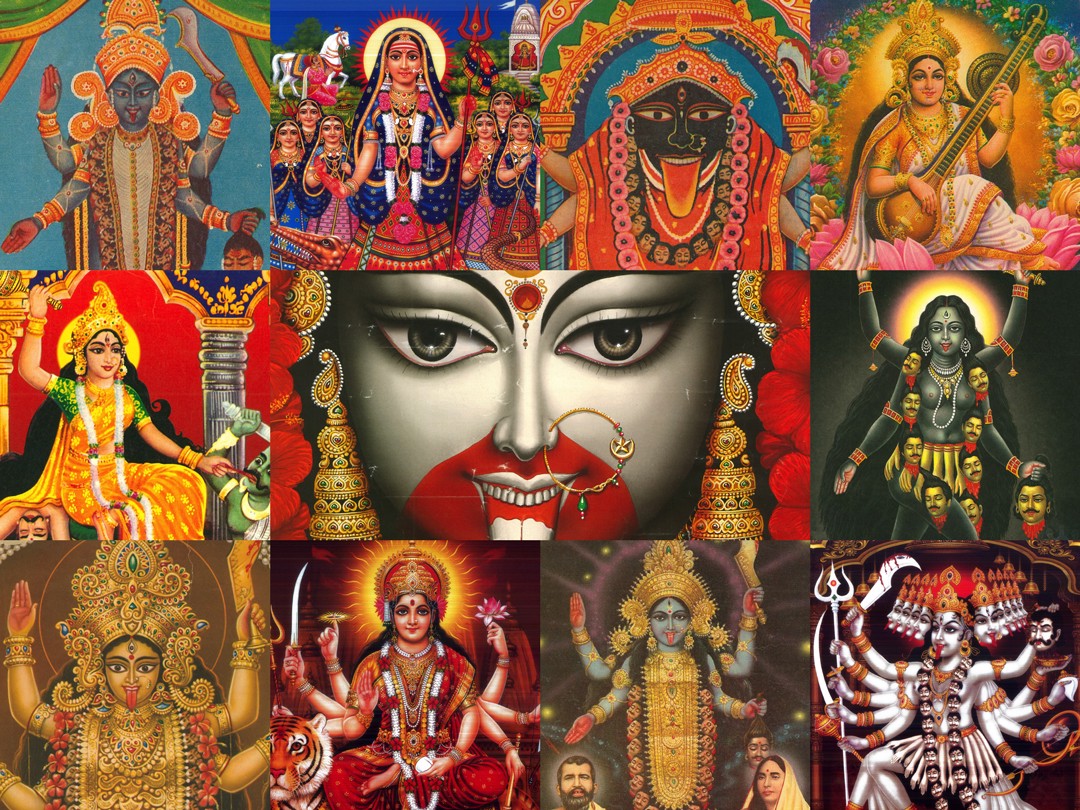No products in the cart.
The most renowned features of Hinduism is the worship of devis, or goddesses, of ancient civilization. The Indus people worshiped a form of Goddess Mother. Vedic peoples worshiped goddesses and deities, such as Indra, Varuna, Agni, and Brahmanaspati.
Hinduism has both the male and the female deities representing the higher powers of the universe, and all the supreme deities have male and female partners. Hindu goddesses are the image of Shakti, the source of female power in the universe. They are highly esteemed and powerful and play a vital role in the creation, protection, and destruction of the universe.
Aditi was the mother of the gods. She gave birth to sun gods or you can say Adityas . Saraswathi was a goddess of education who was likened to a river. Lakshmi is the goddess of wealth. He brought happiness and prosperity to one another, giving the cows and the good crops to those who asked for it. The earth was compared to the mother while the sky went to Prajapathi, Indra or Brahmanaspathi. Usha was the goddess of the dawn. He symbolized awakening and proclaimed the coming of the sun in his golden chariot bound with seven red horses. If Haimavathi of Katha Upanishad, he was a mysterious friend of the supreme Brahman, who served as His messenger and conveyed Brahman knowledge to Indra, Agni and Vayu and helped them to become the first and foremost among the devaloka gods. Then there was Yami, who longed for friendship and physical unity with his brother Yam, who was the Lord of the underworld and the image of justice.
So here, we are going to discuss about Hindu Goddesses who plays very important role in saving the universe:
1. Radha

Radha is often depicted near Krishna. He is also known as Radhika or Radharani. It is believed that Radha and Krishna are not perfect without each other, and Radha is a friend and companion of Krishna, representing his supreme power and Shakti. Radha is considered to be superior to Rukmini (Krishna’s wife, and the birth of the goddess Lakshmi) and not the birth of Lakshmi (Vishnu’s friend) himself. Radha is known for his great devotion to Krishna, which reflects the longing of each devoted person to be associated with the supreme. It was by the power of her devotion that she was able to attain the status of a goddess and be worshiped by a multitude of devotees.
Radha is said to be the avatar of Goddess Lakshmi, the power of the goddess or shakti of God Vishnu. Lakshmi was reborn on earth as ‘Gopi’ in the village of Barsana near Vrindavan.
2. Kamadhenu
Kamadhenu, also known as Surabi, is a cattle goddess described in Hinduism as the mother of all cattle. She is a wonderful cow that gives her owner whatever she wants and is often portrayed as the mother of other cows. In the image, he is often portrayed as a white cow with a female head and breasts, a bird’s wings, and a pea tail or as a white cow with various gods in its body. Kamadhenu is not worshiped independently as a goddess. Instead, he is credited with honoring Hindu cattle, which are considered his earthly examples.

Hindu texts provide various accounts of the birth of Kadadhenu. While some have described her as coming out of the cosmic ocean movement, others have described her as the daughter of the god creator Daksha, and as the wife of the scholar Kashyapa. Other sources make it clear that Kamadhenu was ruled by Jamadagni or Vashista (both ancient scholars), and that the kings who tried to steal the sage eventually suffered dire consequences.
According to Indologist Madeleine Biardeau, Kamadhenu or Kamaduh is the common name of the sacred cow, considered to be the source of all Hindu prosperity. Kamadhenu is considered to be a form of Devi (Divine Hindu Mother) and is closely related to 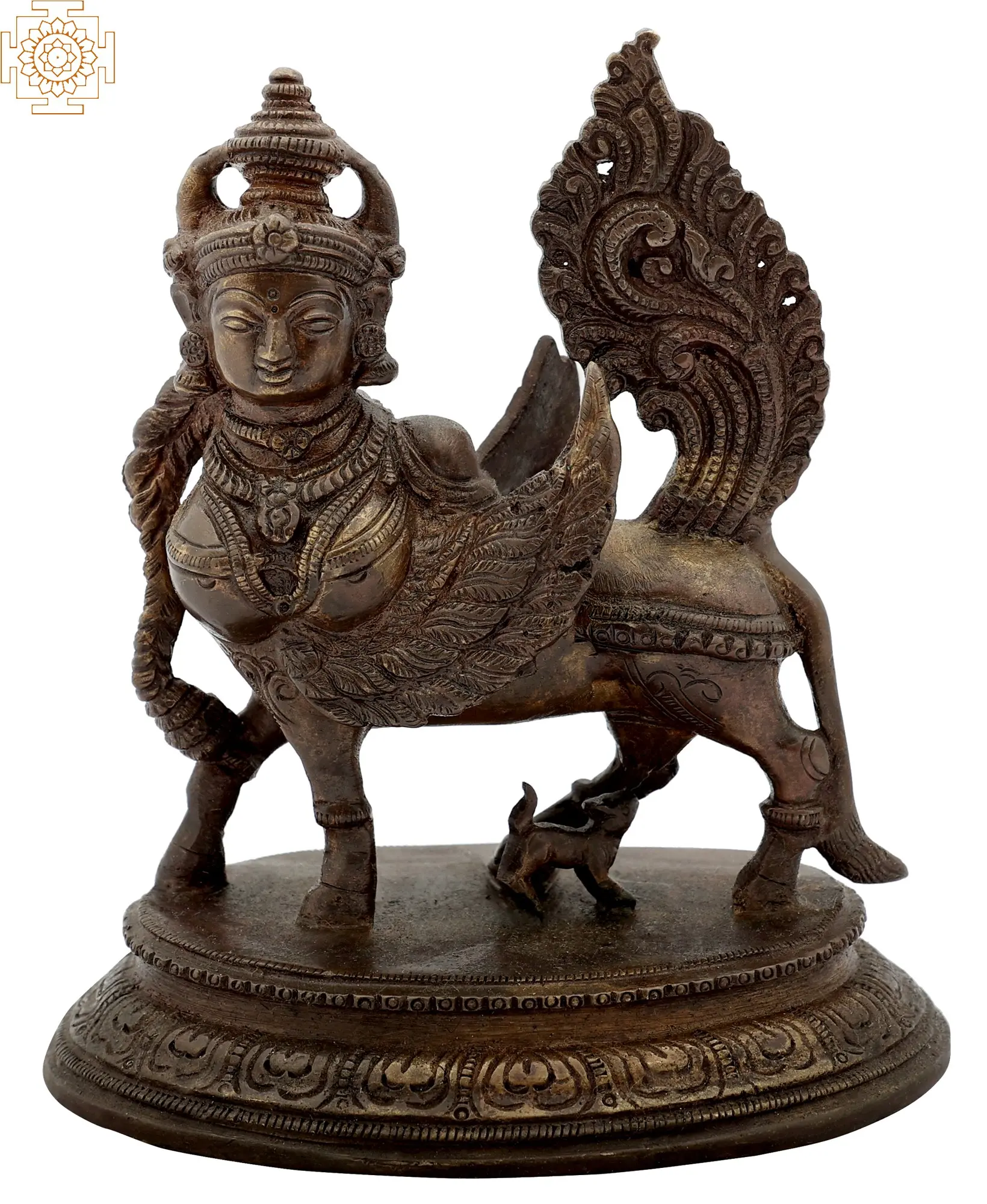 the fertile Mother of the Earth (Prithvi), often described as a cow in Sanskrit. Holy cow means “clean and careless, … giving and the nature of the mother, [and] nourishing human life”.
the fertile Mother of the Earth (Prithvi), often described as a cow in Sanskrit. Holy cow means “clean and careless, … giving and the nature of the mother, [and] nourishing human life”.
Frederick M. Smith describes Kamadhenu as “a famous and enduring figure in Indian art”. All the gods are believed to live in the body of Kadadhenu — the common bull. His four legs are Scriptural Vedas; its horns are three gods Brahma (tip), Vishnu (middle) and Shiva (base); her eyes are sun and moon gods, her shoulders are the fire god Agni and the spirit god Vayu and her Himalayas legs. Kamadhenu is often portrayed in this form in the art of the poster.
Another image of Kadadhenu also shows the body of a white Zebu cow, the crowned woman’s head, the colorful eagle wings, and the peacock’s tail. According to the Philadelphia Museum of Art, the form is influenced by the image of Islamic Buraq, depicting the body of a horse, the wings, and the face of a woman. Modern poster art presents Kamadhenu in this form.
The cow, associated with Kamadhenu, is often depicted with the goddess Dattatreya. With reference to the image of the deity, he describes the Brahminical element and the Vaishnava connection with the gods as opposed to the accompanying dogs — symbolizing the non-Brahminical aspect. He also depicts Panch Bhuta (five ancient objects) in the statue. Dattatreya is sometimes depicted with a divine cow in one of his hands.
3. Tulsi
 Tulsi is the goddess worshiped and revered in the form of the basil plant. The remedy has medicinal significance and myth in Hinduism. Tulsi’s story is often associated with Vrinda and Jalandhar. Jalandhar, born the third eye of King Shiva, became very powerful and threatened the existence of gods. His strength was also the result of the devotion and faithfulness of his wife Vrinda, who was zealously devoted to Vishnu. In order to kill Jalandhar and save the world and the gods from his wrath, Vishnu decided to take Jalandhar’s position and approach Vrinda, thus leading him to commit adultery. This deprived Jalandhar of the power he gained through his wife’s dedication. Upon learning that it was Vishnu, Vrinda cursed him to be born as a stone called Shaligram. He finally threw himself into the abyss and was reborn as Tulsi.
Tulsi is the goddess worshiped and revered in the form of the basil plant. The remedy has medicinal significance and myth in Hinduism. Tulsi’s story is often associated with Vrinda and Jalandhar. Jalandhar, born the third eye of King Shiva, became very powerful and threatened the existence of gods. His strength was also the result of the devotion and faithfulness of his wife Vrinda, who was zealously devoted to Vishnu. In order to kill Jalandhar and save the world and the gods from his wrath, Vishnu decided to take Jalandhar’s position and approach Vrinda, thus leading him to commit adultery. This deprived Jalandhar of the power he gained through his wife’s dedication. Upon learning that it was Vishnu, Vrinda cursed him to be born as a stone called Shaligram. He finally threw himself into the abyss and was reborn as Tulsi.
4. Sita
Sita, also known as Janaki, is the birthplace of Lakshmi. 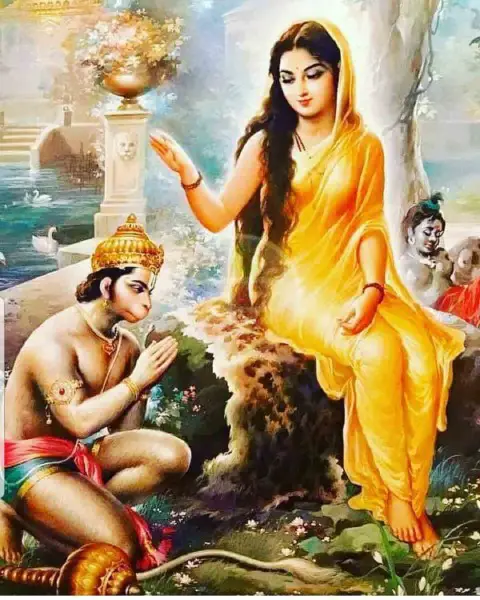 She is the daughter of Janak, king of Janakpur. His name Janaki comes from his hometown, Janaki Mandir, which is found in Janakpur in Nepal and dedicated to Sita. She is believed to have been from Bhumi and is the daughter of Mother Earth. She is the wife of Ram and the central character in the epic Ramayana. Sita follows Ram in his 14-year exile from Ayodhya when he is kidnapped by the demon king of Lanka, Ravana. It is this action that leads to the battle in which Ram kills Ravana and saves Sita. He is also remembered and honored with the Agni Parikchya, or fiery trial, for holding Ram’s orders in order to prove his innocence. Sita represents the power of woman and beauty.
She is the daughter of Janak, king of Janakpur. His name Janaki comes from his hometown, Janaki Mandir, which is found in Janakpur in Nepal and dedicated to Sita. She is believed to have been from Bhumi and is the daughter of Mother Earth. She is the wife of Ram and the central character in the epic Ramayana. Sita follows Ram in his 14-year exile from Ayodhya when he is kidnapped by the demon king of Lanka, Ravana. It is this action that leads to the battle in which Ram kills Ravana and saves Sita. He is also remembered and honored with the Agni Parikchya, or fiery trial, for holding Ram’s orders in order to prove his innocence. Sita represents the power of woman and beauty.
5. Ganga

Ganga is a representation of the Ganga River and is a popular goddess of Hindu history. She is the daughter of Parvat Raj Himalaya or Himavan and his sister to the goddess Parvati. He ascended to heaven to cleanse the sins that were transmitted by Tarkasur, one of the demonic kings. He descended to Earth to cleanse the sins of mankind at the request of Shiva. During her descent, Ganga was caught in Shiva’s hair to prevent the destruction of Bhumi Devi (Mother of the Earth) as Bhumi Devi will not be able to carry the water that falls from the sky. The Ganga River flows through the Himalayan foothills and descends to the plains of India. Devotees firmly believe that bathing in the holy river will wash away sin and evil.
6. Kali
 Kali represents the mighty Shakti. He is also known as the destroyer or one who liberates the soul and gives moksha or enlightenment. He is the body of Parvati / Durga. Kali was born to defeat the demon Raktabeech, who was believed to be able to create new, powerful demons in every drop of his blood that touched the ground. Kali therefore appears to be an angry and angry goddess with a skull, a knife and a bowl in her hands. During the war he had to cut Raktabeech, fill his bowl with his blood and drink it. He continued to do so and thus became more and more aggressive and destructive. To protect the world from her wrath, Shiva, her husband, lay at her feet to silence her. As a result, he bit his tongue in embarrassment after seeing his mistake. Thus, his iconography also shows King Shiva lying at his feet and Kali biting his tongue.
Kali represents the mighty Shakti. He is also known as the destroyer or one who liberates the soul and gives moksha or enlightenment. He is the body of Parvati / Durga. Kali was born to defeat the demon Raktabeech, who was believed to be able to create new, powerful demons in every drop of his blood that touched the ground. Kali therefore appears to be an angry and angry goddess with a skull, a knife and a bowl in her hands. During the war he had to cut Raktabeech, fill his bowl with his blood and drink it. He continued to do so and thus became more and more aggressive and destructive. To protect the world from her wrath, Shiva, her husband, lay at her feet to silence her. As a result, he bit his tongue in embarrassment after seeing his mistake. Thus, his iconography also shows King Shiva lying at his feet and Kali biting his tongue.
7. Saraswati
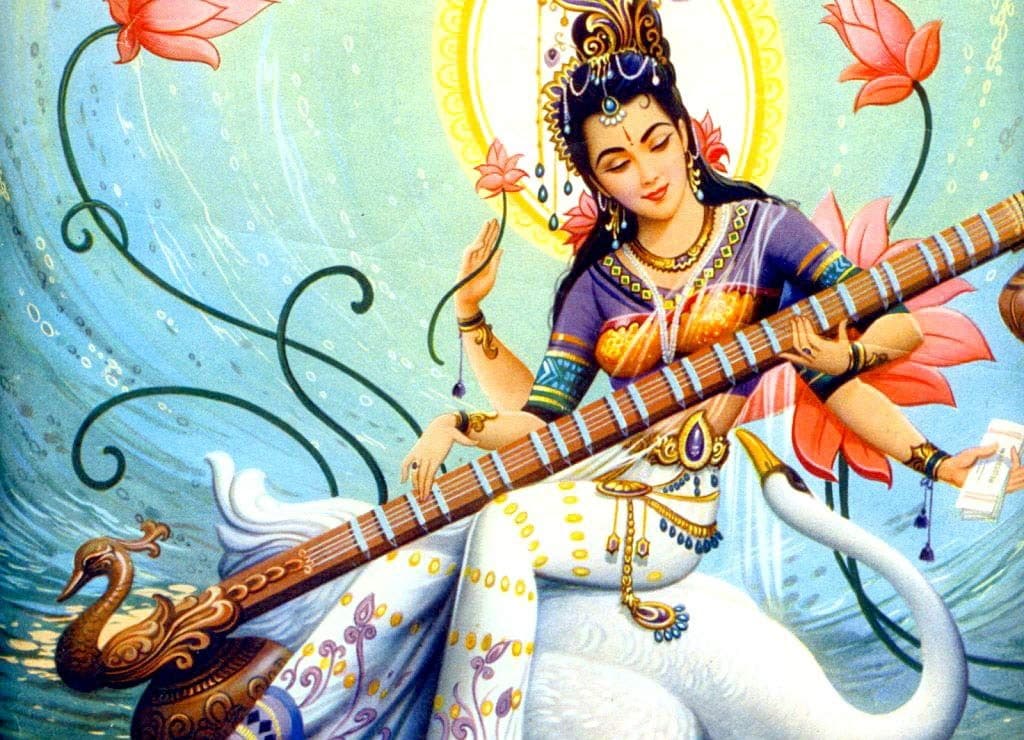
Saraswati is the goddess of wisdom, music, and learning. He is also known as Sharada. She is the wife of Brahma. Saraswati is one of the goddesses of the Hindu Tridevi, a female companion of Tridevs. Vahana or his car duck or goose. Her icon shows her with four hands, two of them holding a veena, a musical instrument. Saraswati Puja is celebrated on the day of Basant Panchami, which is also the first day of spring. Devotees rise early in the morning and worship at his temples in hopes of being blessed with wisdom and knowledge.
8. Lakshmi

Lakshmi is a famous goddess of wealth, abundance, and fertility. It is worshiped during the Deepawali festival, or festival of light. It is believed that the cleanest and most beautiful house will be chosen by Lakshmi on the night of the festival. So devotees cleaned and decorated their homes with lanterns and flower arrangements. And she is one of the Tridevi goddesses. He is Vishnu’s wife and is reborn next to his wife on Earth. Lakshmi represents not only material wealth but also glory, joy, and fame. His vahana is an owl and a white elephant, the Airawat.
9. Parvati

Parvati is one of the goddesses of Tridevi. She is also known as Gauri. She is the wife of Shiva and the mother of Kumar and Ganesh. Parvati is the reincarnation of Sati, who was once Shiva’s wife but was thrown into the fire for her father’s disrespectful behavior to her husband. Parvati was born as a mortal in the Parvat Raj Himalaya. It was out of constant remorse and devotion that she was able to gain the full power of Shakti and become one of the most revered goddesses and become the ideal wife of Shiva. Parvati represents Shakti caring and mother. His vahana is a lion or a leopard.
10. Durga
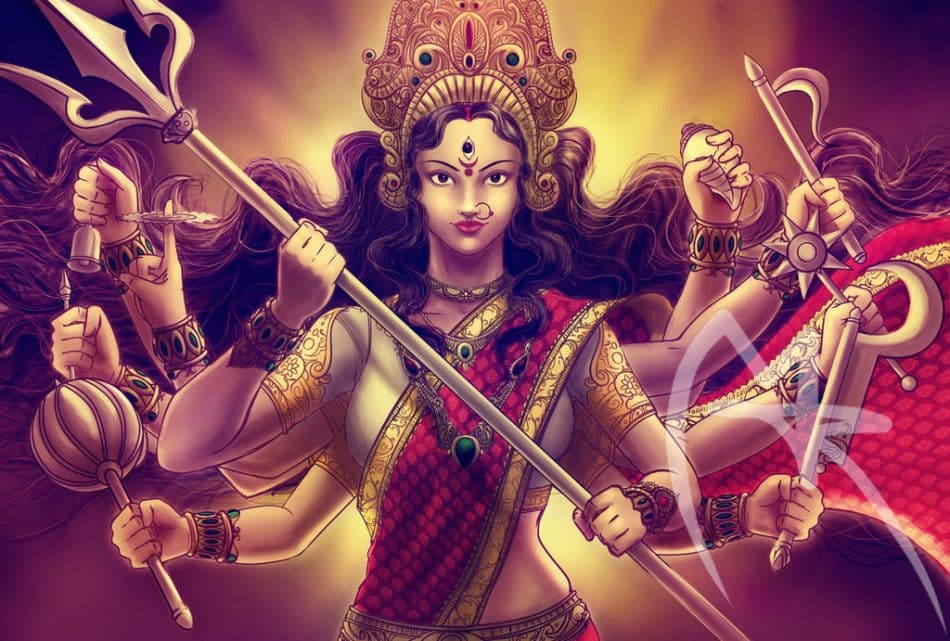
Durga is probably one of the most famous symbols of Shakti. He is one of the chief deities worshiped during the Dashain /Navaratri festivals, one of the most important Hindu festivals. The festival also celebrates the death of Mahisasur, one of the most powerful demon gods. Mahisasur is known to have been assassinated by the goddess Durga. The king of demons believed that it was impossible for a goddess to have the power to kill her. Durga is also known as the Mahisasur Mardini, or Mahisasur assassin. She is also the epitome of female power throughout the universe. His icon shows him riding a lion or a leopard and holding a trishul or a trident. He is also depicted with many hands and accompanied by Mahisasur’s body stabbed by his trishul.`

